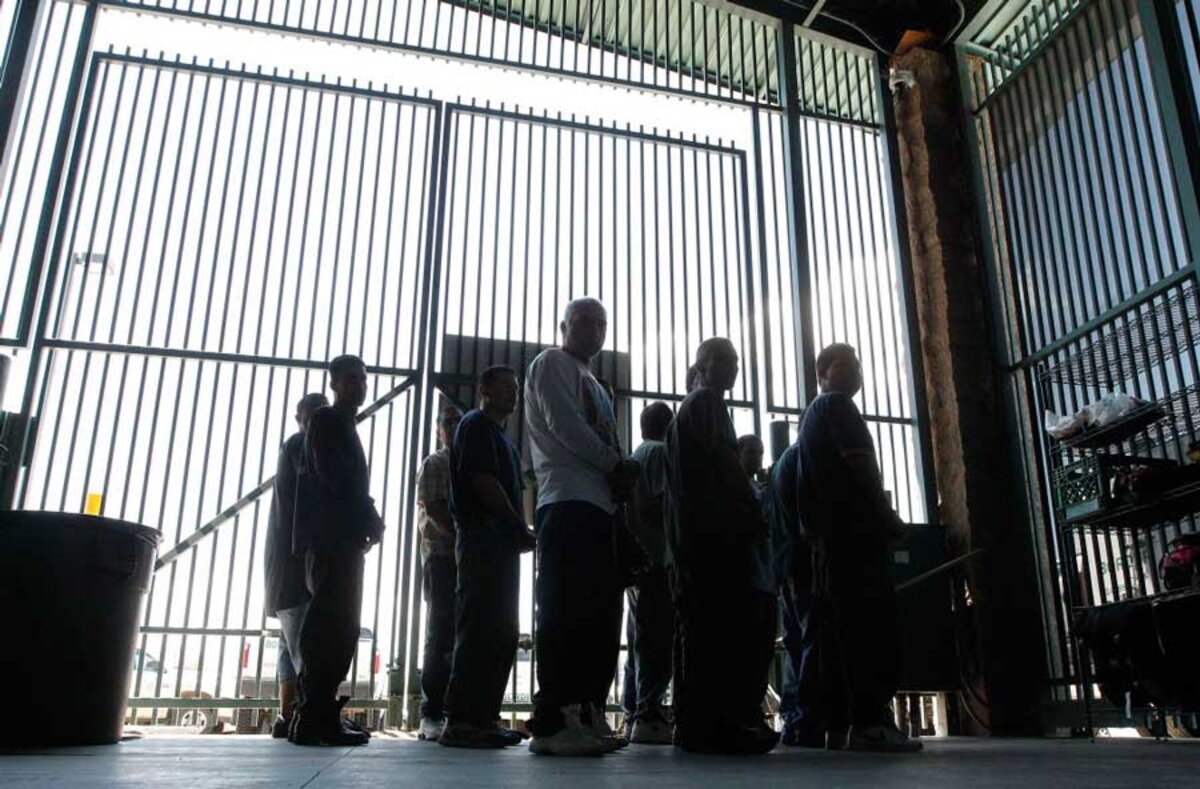Supreme Court appears divided over key immigration case
Loading...
| Washington
The US Supreme Court heard arguments Wednesday in what could be one of the more divisive cases of a politically charged term. While President-elect Donald Trump’s name was never invoked, the case could have significant consequences for one of the landmark proposals of his campaign.
It has been more than a decade since the high court reviewed a case involving the immigrant detention system, and the system has experienced significant growth and changes during that period. Mr. Trump’s pledge to has only raised the stakes of the case.
“Mandatory detention” statutes permit the federal government to detain certain noncitizens while their removal proceedings are ongoing, without having to justify their ongoing detention to a judge. Noncitizens include legal permanent residents with criminal records and immigrants arriving at the US border for the first time.
The case, , concerns whether those immigrants should be allowed a bond hearing after their detention becomes “prolonged” and cuts to the notion of fairness within the deportation process.The Ninth Circuit Court of Appeals ruled that a bond hearing is required for immigrants detained six months or longer. The Obama administration appealed, arguing that mandatory detention laws are necessary to prevent immigrants from going on the run during hearings.
The high court seemed deeply divided at Wednesday's hearing. Its four more liberal justices questioned whether the laws circumvent the constitutional guarantee of due process, while the more conservative wing argued that federal laws give the government wide latitude in such cases.
“The court traditionally has taken any form of incarceration pretty seriously,” Hiroshi Motomura, a professor at the University of California, Los Angeles, School of Law, told the Monitor last week. “It’s likely to be a close case. It’s hard to predict.”
The average length of detention was 13 months for the immigrants involved in the class-action lawsuit – with some immigrants held in detention for years. The system has swollen from an average daily immigration detention population of 7,475 in 1995 to almost 33,000 this year, according , though only a fraction of detainees experience prolonged detention. Trump’s plans would expand that system even more, according to
On Wednesday, the liberal justices on the court were quick to press Acting Solicitor General Ian Gershengorn on the prolonged detention issue.
“If these are people who have been here for decades, let's say, don't you think due process would require some periodic review to ensure that these people are properly being held?” asked Justice Sonia Sotomayor.
“That's what a judge does in bail hearings. That's what a judge does in almost every other detention [context],” she added. “At a certain point your calculus changes.”
Mr. Gershengorn responded by arguing that “if the purpose of detention is being served, that the government is moving reasonably quickly to accomplish removal … then, absent very unusual circumstances, that detention is constitutional.”
He was referencing the court’s 2003 decision in Demore v. Kim, which held that the mandatory detention of immigrants is constitutional when it’s brief and the immigrant had conceded their deportability. Specifically, he referenced Justice Anthony Kennedy, who wrote in his concurrence that “the ultimate purpose behind the detention is premised on the alien’s deportability.”
But Justice Elena Kagan, another of the court’s more liberal members, was quick to point out that the Demore decision had been presaged on incorrect data from the Justice Department, which said the average detention period in such cases was only four months. Gershengorn himself made the court aware of the “several significant errors” in August.
“If you put Demore aside, I think we would all look at our precedent and we would say, ‘You can't just lock people up without any finding of dangerousness, without any finding of flight risk, for an indefinite period of time,’ ” she said.
When Ahilan Arulanantham, a senior staff attorney for the American Civil Liberties Union, stepped up to make his arguments to the justices, the script flipped, with the court’s more conservative members leading the questioning.
One long line of questioning regarded whether the high court should make a judgment on the constitutionality of the statutes at issue in the case. The Ninth Circuit had not made a judgment on that, only going so far as to say they fall within the “constitutional avoidance” doctrine – that a court will interpret a statute in a way that avoids constitutional problems, in this case the right to due process.
The Ninth Circuit’s interpretation – essentially, that adding a requirement for bond hearings after six months of detention avoids any constitutional issues the statutes may otherwise have – felt like a half-measure to Justice Samuel Alito, skirting the tougher question of the statutes’ fundamental constitutionality.
Constitutional avoidance, he added, isn’t “sort of a, ‘Well, we really don’t think we can interpret the statute this way, but we don’t have the guts to say that it’s unconstitutional.’ ”
And to ask the Supreme Court to go that step further and rule on the constitutionality of the laws is asking a lot, according to Chief Justice John Roberts.
Since the Ninth Circuit didn’t tackle the constitutionality question, he asked, “do you expect us to do it in the first instance?” That question elicited a chuckle from the usually silent Justice Clarence Thomas.
“Our job is to read the statute, and if [we find] it's unconstitutional, that's our job,” he added. “But we can't just write a different statute because we think it would be more administrable.”





